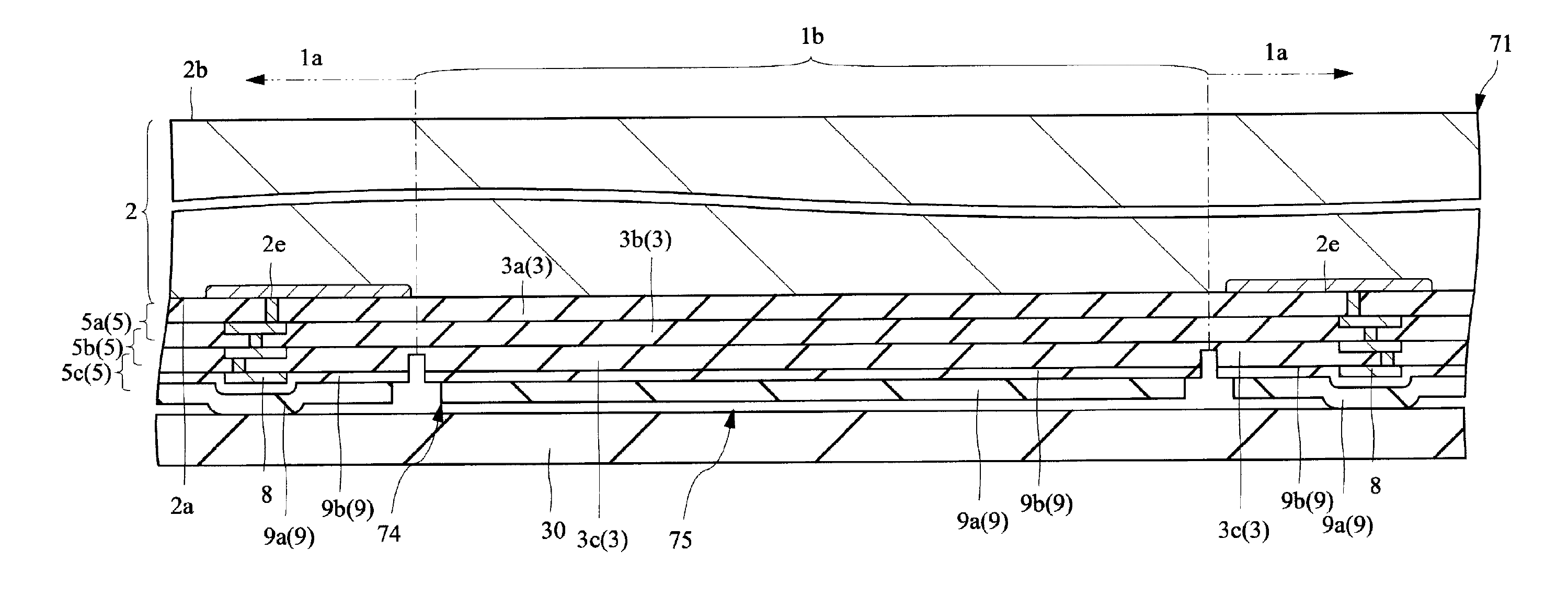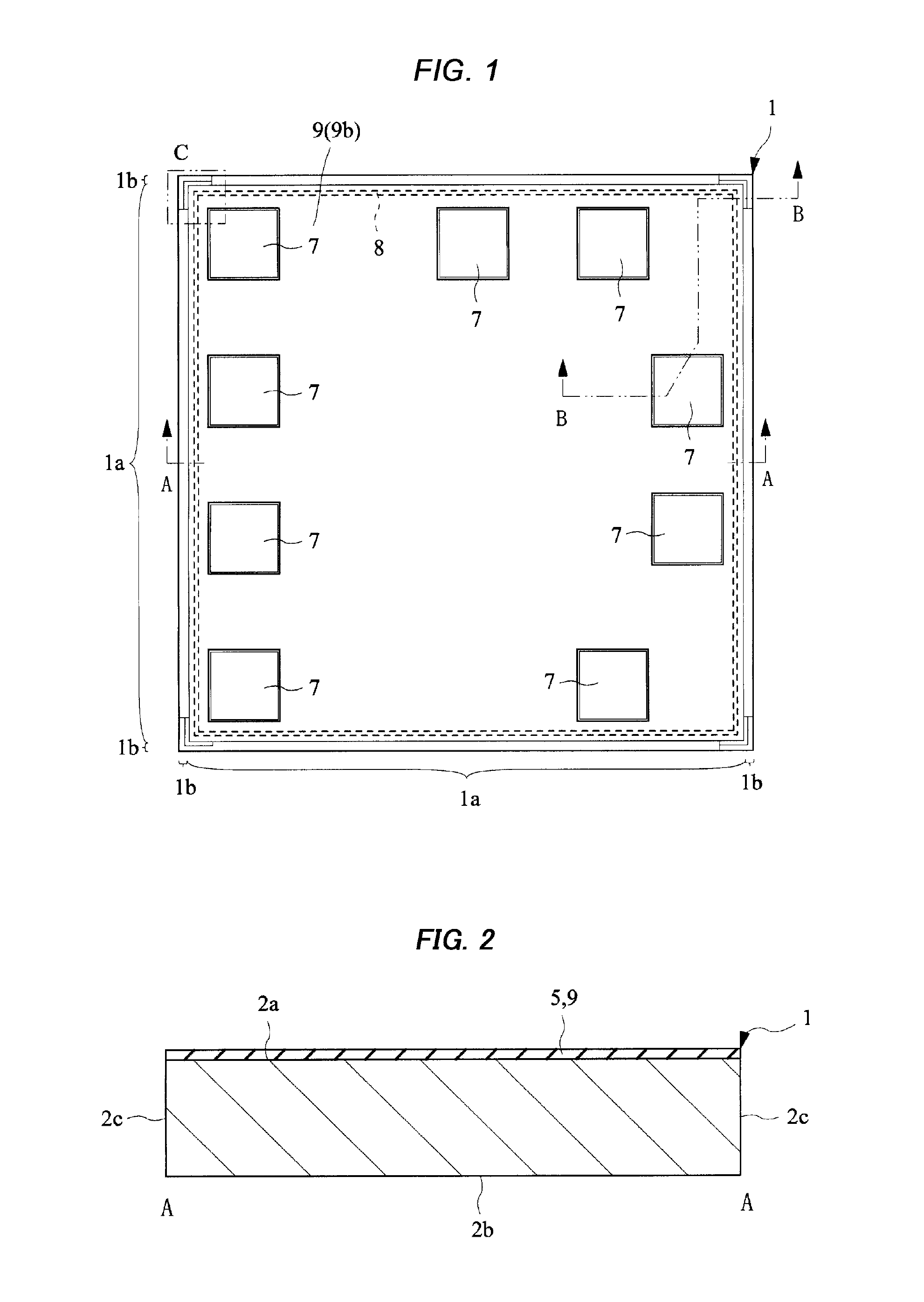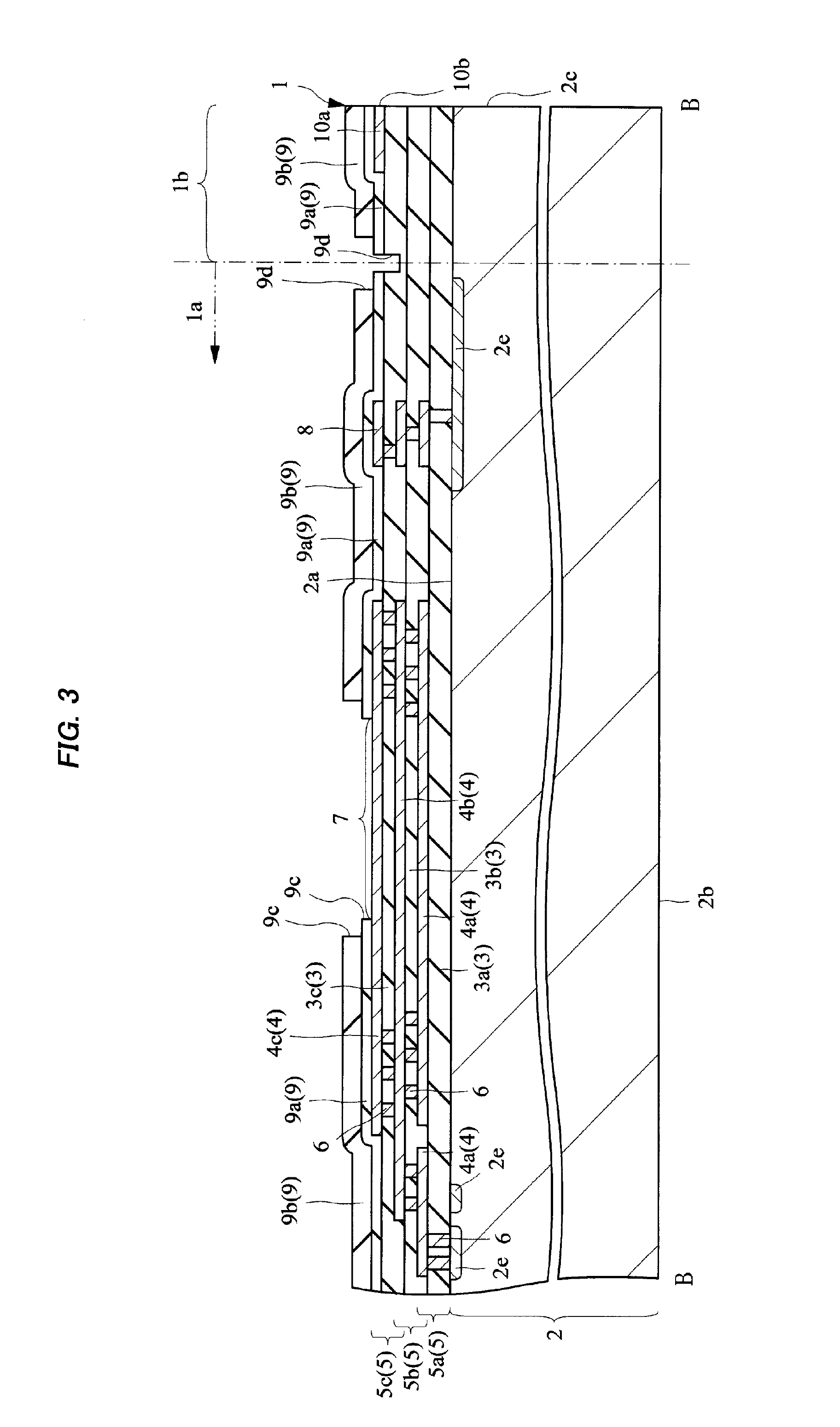Manufacturing method of semiconductor device and semiconductor device
a manufacturing method and semiconductor technology, applied in the field of semiconductor devices, can solve problems such as contamination of the device region, and achieve the effect of improving the reliability of semiconductor devices
- Summary
- Abstract
- Description
- Claims
- Application Information
AI Technical Summary
Benefits of technology
Problems solved by technology
Method used
Image
Examples
embodiment 1
Structure of a Semiconductor Chip Semiconductor Device
[0056]First, the structure of a semiconductor chip (semiconductor device) according to Embodiment 1 will be explained. FIG. 1 is a plan view showing the principal surface side of a semiconductor chip being a semiconductor device in Embodiment 1. FIG. 2 is a cross-sectional view along the A-A line in FIG. 1, and FIG. 3 is an enlarged cross-sectional view along the B-B line in FIG. 1. FIG. 4 is an enlarged plan view of the C part in FIG. 1. FIGS. 1 and 2 are the plan view and the cross-sectional view respectively showing the overall structure of the semiconductor chip, and the detailed structure of the semiconductor chip is explained using FIGS. 3 and 4, which are enlarged drawings thereof, respectively. Meanwhile, FIG. 4 is a plan view, but hatching is given to make it easy to understand the planar shape of respective insulating layers laminated on the principal surface side, metal patterns etc.
[0057]A semiconductor chip (semicond...
embodiment 2
[0139]In embodiment 1, an embodiment, having an arrangement layout of the stopper 11 over the principal surface 2a of the semiconductor wafer 20 such that the stopper 11 is disposed at each of intersections of plural scribe lines was described. In Embodiment 2, a modified example of the layout of the stopper 11 is described as follows. FIG. 25 is an enlarged plan view showing a part of a semiconductor wafer being a modified example of the semiconductor wafer shown in FIG. 7. Meanwhile, a semiconductor wafer 50 in Embodiment 2 is substantially the same as the wafer in Embodiment 1 except for the layout of the stopper 11. Accordingly, overlapping explanations are omitted with respect to FIGS. 1 to 23 explained in Embodiment 1.
[0140]A difference between the semiconductor wafer 50 in Embodiment 2 shown in FIG. 25 and the semiconductor wafer 20 in Embodiment 1 shown in FIG. 7 lies in the layout of the stopper 11. In more detailed explanation, the semiconductor wafer 50 has plural interse...
embodiment 3
[0148]In Embodiment 1, plural (four) metal patterns 10 are formed for the wiring layer 5c regarding the structure of the stopper 11 over the principal surface 2a of the semiconductor wafer 20. In Embodiment 3, a modified example of the metal pattern to be formed for the stopper 11 is described. FIG. 26 is an enlarged plan view showing a part of a semiconductor wafer being a first modified example of the semiconductor wafer shown in FIG. 9. FIG. 27 is an enlarged plan view showing a part of a semiconductor wafer being a second modified example of the semiconductor wafer shown in FIG. 9. FIG. 28 is an enlarged plan view showing apart of a semiconductor wafer being a third modified example of the semiconductor wafer shown in FIG. 9. FIG. 29 is an enlarged plan view showing a part of a semiconductor wafer being a fourth modified example of the semiconductor wafer shown in FIG. 9. Meanwhile, semiconductor wafers 51, 52, 53 and 54 of Embodiment 3 shown in FIGS. 26 to 29 are substantially ...
PUM
 Login to View More
Login to View More Abstract
Description
Claims
Application Information
 Login to View More
Login to View More - R&D
- Intellectual Property
- Life Sciences
- Materials
- Tech Scout
- Unparalleled Data Quality
- Higher Quality Content
- 60% Fewer Hallucinations
Browse by: Latest US Patents, China's latest patents, Technical Efficacy Thesaurus, Application Domain, Technology Topic, Popular Technical Reports.
© 2025 PatSnap. All rights reserved.Legal|Privacy policy|Modern Slavery Act Transparency Statement|Sitemap|About US| Contact US: help@patsnap.com



